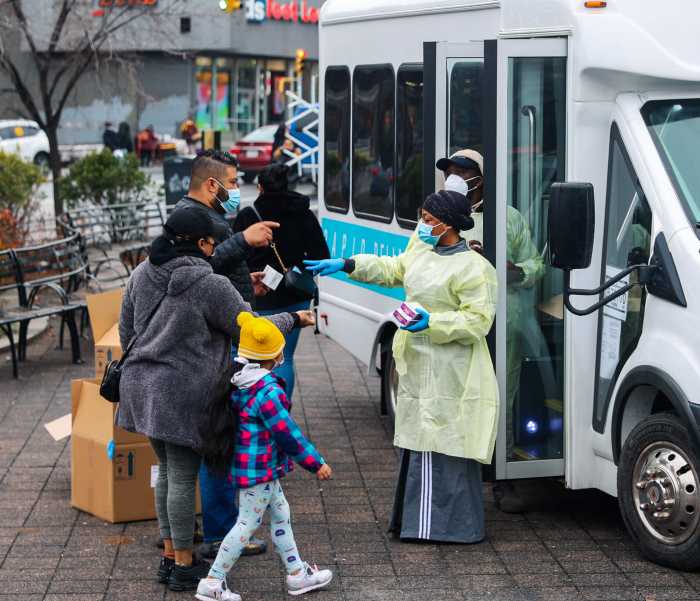With summer on the horizon, most New Yorkers are ready to put the COVID-19 pandemic in the rearview mirror. Katie Allison, a Riverdale college student, was one of those looking for an “uninterrupted hot girl summer” but her recent COVID diagnosis over the weekend is a stark reminder that the virus is still ever-present in New York City.
On Monday, the city’s official COVID-19 risk alert level was upgraded to “medium” — a sign that the virus is again spreading faster through the five boroughs, as the case rate in the city now stands at 200 per 100,000 people, city Health Commissioner Dr. Ashwin Vasan said. The increase in cases comes as city, state and federal officials relaxed many stringent COVID-19 mandates last month, such as indoor mask-wearing and vaccinations.
Prior to Monday, the Bronx’s transmission rate hovered around 15 new cases per day, a far cry from the January high of 565 new cases per day during winter’s omicron surge — a highly transmissible strain of the virus. But COVID-19 pockets are now beginning to remerge, in areas such as the Fieldston/Riverdale 10471 ZIP code where cases surpass the city’s median seven-day per 100,000 case metric of 17.7 cases, with 31.6 cases per 100,000 over that same seven-day span.
The only other Bronx ZIP code surpassing the city’s median total is the Wakefield/Woodlawn 10470 ZIP code which is a shade over the city’s median at 18 cases per 100,000.
Fortunately, due to the Bronx’s near 88% vaccination rate, hospitalizations in the borough remain low with roughly 70 COVID-19 hospitalization per week, which is dwarfed by the omicron surge where hospitalizations reached as high as 1,100 per week over the winter.
Vasan encouraged New Yorkers to wear masks in public indoor settings, and to continue getting vaccinations and recommended booster doses. As of Monday, the Bronx’s booster rate is around 26%.
This recent wave of infections, health officials said, is due to an even more contagious subvariant of omicron known as BA.2, which is taking hold in NYC — namely, the city’s more densely populated areas in Manhattan’s lower districts.
Allison, who is vaccinated and boosted, said she doesn’t know how she caught the virus, as she wears a mask indoors and on public transit, but noted that others around her have stopped being as precautious.
“I would’ve said two weeks ago that ‘yay, finally this pandemic is over’ but here I am with COVID and not able to taste my food,” she said. “There’s so much we still don’t know about this virus, so I think the most we can do is be responsible for each other and our public health.”
The city saw more than 2,500 new COVID-19 cases on Saturday, according to state Health Department data. On March 1, there were 788 new cases, data shows. However, the city maintained its low-level virus designation throughout the winter’s omicron surge.
“The coming weeks will be critical to slowing the spread of COVID-19 and getting back to a low-risk level so we can more safely enjoy our spring,” Vasan said in a statement. “And remember, the steps you take to protect yourself also protect others, especially those most vulnerable.”
Reach Robbie Sequeira at rsequeira@schnepsmedia.com or (718) 260-4599. For more coverage, follow us on Twitter, Facebook and Instagram @bronxtimes






















